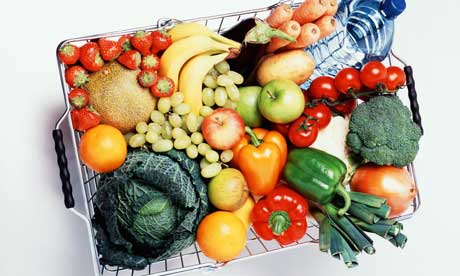
Incase you didn’t already know, I write for the brilliant Superfood Magazine and in a recent edition I wrote all about ‘navigate the supermarket’; aka the Dietitian’s Supermarket sweep. And just incase you missed it, here it is below – I really hope you find it useful!
“The Supermarket can be a minefield when it comes to healthy living. As you enter the shop, you are presented with a vast array of healthy fresh produce to fill your trolly with, but then come the aisles of tempting and colourful offers on tasty, highly processed ‘junk food’. And if it’s not the buy one get one free on Oreos that will get you, it’s bound to be the Mars Bar as you cue up to pay.
To help you to navigate your local supermarket, here is in my simple guide..”
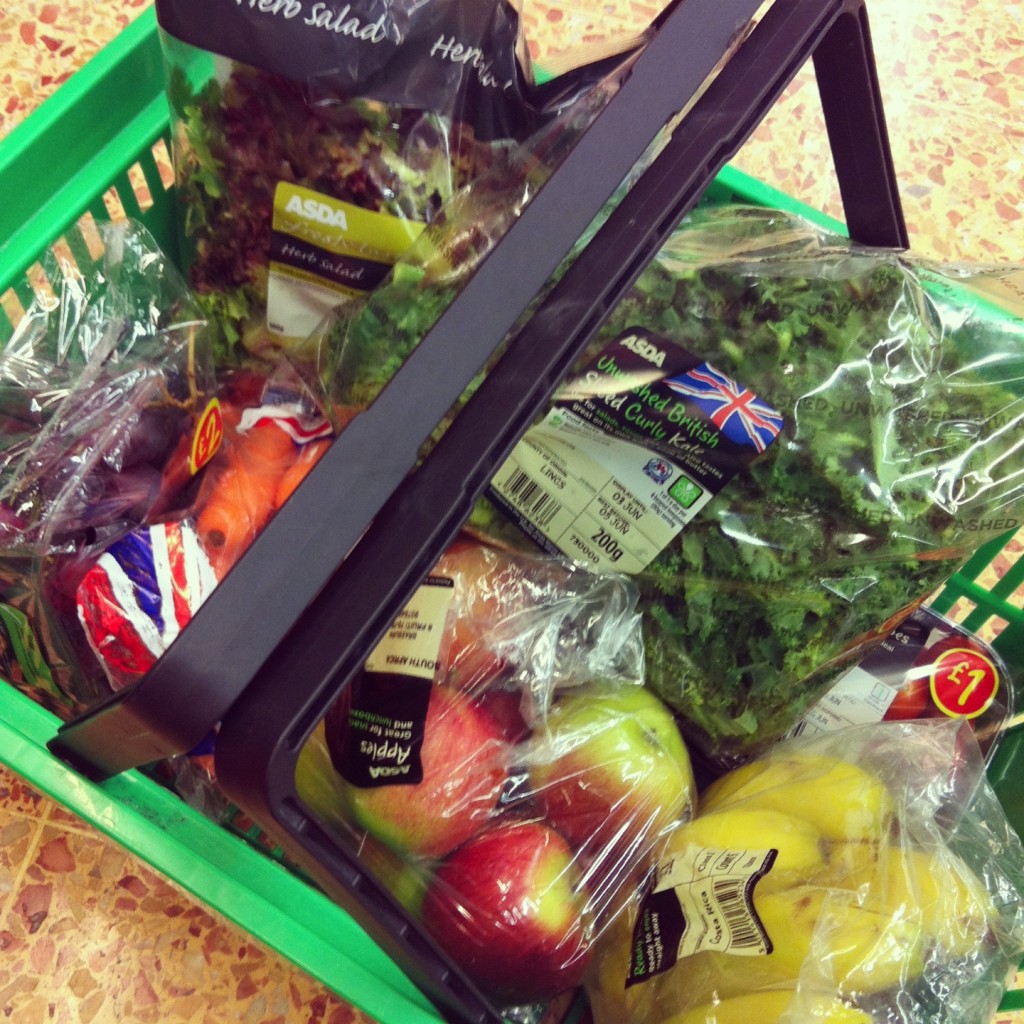
- Fruit, Vegetable, Salad & Potato Section
The first rule in my supermarket guide; spend most of your time in the supermarket in this section!
Fruit – Fruit makes the perfect snack if you’re hungry, it bulks up your breakfast and can be a great alternative to a sugary dessert, especially when served with yoghurt. Fruit is packed with vitamins, minerals, antioxidants (which keep us healthy), fibre and it’s relatively low in calories too. A handful of fruit comes in at around 50 calories, and although some fruits do contain more calories than others; e.g. a large banana has more calories and carbs than a bowl or blueberries, a piece of fruit is always a healthier option in comparison to biscuits and sweets which provide very little in the way of nutrients.
The government recommends that we should eat at least 5 portions of fruit and vegetables a day, a portion being a handful or 80g of fresh fruit. For dried fruit though, the amount that equates to one portion decreases to just a small handful or 30g due the removal of the water. There are more calories in dried fruit weight for weight which is why we shouldn’t eat them in copious amounts; a small amount though can be a great way of helping your digestive system to keep moving because of all of the fibre. I personally like the advice that is given in Australia; Go for 2 & 5 (2 portions of fruit and 5 portions of vegetables a day).
Vegetables & Salad – Vegetables should be eaten in abundance. The key though with fresh vegetables is to buy only what you need for the week, to prevent food waste, or you could have a go at making soup!
Like fruit, vegetables are crammed with phytonutrients and plant goodness and are very low in calories thanks to the high water and fibre content. Experiment with different cooking methods to keep your vegetables interesting; you can throw a handful of spinach into a smoothie or a stir-fry, spiralize courgette and roast onions and peppers; it’s amazing what a little bit of rapeseed oil and some herbs can do! If you’re trying to lose weight aim to fill half of your plate with vegetables and if you’re trying to maintain your weight then fill a third of your plate with vegetables. Vegetables release their energy slowly and to get a wide range of nutrients aim to eat a variety of different colours!
Like vegetables, salad items such as lettuce and cucumber should also be eaten in abundance, just watch out for the creamy dressings; you could try a sprinkling of olive oil, balsamic vinegar or lemon juice instead, or a mixture of all three!
Potatoes – Potatoes are usually found in the same section as the vegetables however with the exception of sweet potatoes, unfortunately they don’t count towards your ‘5 a day’. Potatoes provide energy, vitamins and fibre (especially if you eat the skin!) and as a general rule you should pick a potato that matches the size of your hand when it is clenched; providing you with enough energy to fuel your day. If you are more active than usual though they you may be able to get away with eating more.
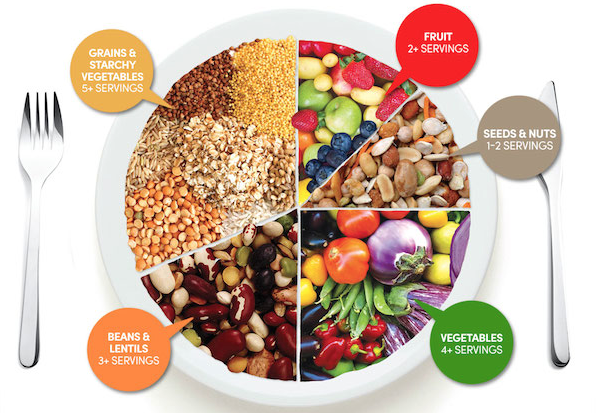
- The Chiller Section
Meat & Poultry – Meat and chicken are a fantastic source of protein, which is vital for growth and repair. If you’re watching your weight take a look at the leaner options such as chicken breast, turkey and lean mince, and try to avoid any skin. Try to limit your intake of processed red meat such as sausages, bacon and ham i.e. avoid having them daily.
Fish – For heart health it is recommended to eat two portions of fish a week, one of which is oily; such as mackerel, sardines, salmon, fresh tuna and pilchards which are rich in essential omega 3 fatty acids. A portion of fish is 140g (after cooking) and includes seafood as prawns, which do not impact on heart health in a negative way, as we were once led to believe. If you don’t like fish then alternative sources of omega 3 fatty acids include walnuts, pumpkin seeds, pecans, almonds, flaxseed and linseed oils and tofu.
Meat-Free Alternatives – Meat free alternatives such as Quorn are a convenient and vegetarian source of protein. As well as being easy to cook they also tend to be lower in calorie than their meat equivalents. I strongly recommend checking out this section of the supermarket if you haven’t done already as there are both health and environmental benefits to having at least one meat-free day a week.
Dairy – Dairy products such as cheese, milk and yoghurt provide protein and also calcium which is essential for teeth and bone health. An adult requires 700mg of calcium a day which you can get by consuming 250ml (a glass) of milk, 30g (a match box size) of cheese and 120g (1 pot) of yoghurt. If you’re watching your calorie intake then choose semi-skimmed milk over full-fat, and if you’re trying to reduce your sugar intake go for plain yoghurt and add your own sweetener or fruit for flavour. Greek yoghurt is packed with protein and makes a convenient, filling snack.
When it comes to buying spreads, gone are the days when margarines were made through the process of hydrogenation, so choose those that are made with olive oil or vegetable oil for heart healthy monounsaturated fats. Butter is also a natural choice, however it isn’t as heart healthy as an olive oil based spread.
If you’re lactose intolerant or vegan choose for milk alternatives such as unsweetened nut or oat milks, milk-free cheeses and spreads, and soya yoghurt.
Ready Meals – Ready meals can be convenient when you’re rushed for time, and although they may be sometimes lacking in the vegetable department, you can always add your own!
Many supermarkets sell lower calorie ready meals (under 400 calories) and the majority have a traffic light label on the front. Colour coded nutritional information tells you at a glance if the food is high, medium or low for fats, sugars and salt. Red means ‘high’, amber means ‘medium’ and green means ‘low’. As a general rule we should be eating more products with ‘green’ labels and fewer products with ‘red’.
Before buying a ready meal I would advise to have a quick look at the ingredients list, to see exactly what you are going to be eating and check how many the carton serves before cooking (so you can choose to heat up all of it or just half if it’s for one person).
Regarding foods such as pizza, remember that you don’t have to cook or eat the whole thing. Choose to eat 1/2 and bulk the rest of your plate out with salad or load the pizza with more vegetables before cooking. Pepper, ham and sweetcorn all work well.
- The Food Aisles
Fats – For cooking, choose an olive oil that is suitable for heating (it will say on the label) or coconut oil; if you like the taste! And for salad dressings stick to olive oil for heart healthy benefits. Try not to use too much oil though during meal preparation or else the calories will soon add up! Aim for a moderate fat, rather than high or low fat, diet for heart health.
Tins & Jars – Tinned food is often cheaper and more convenient than fresh, and as a bonus it has a longer shelf-life. A can of baked beans is a great source of protein, fibre and slow release carbohydrate and it also can count towards one of your ‘5 a day’. Other types of beans, as well as lentils, are perfect to keep in the cupboards to bulk out stews, chillies and chicken dish. Tinned soups can be another good item to keep in your cupboards, just remember to compare salt levels if you’ve got high blood pressure and consider buying the lower one.
Tinned fish is often cheaper than fresh however be sure to buy those tinned in spring water or tomato sauce as opposed to brine or oil; which come with extra salt and calories!
Regarding foods such as jam and honey, eat these in moderation due to the sugar content. If you can opt for reduced sugar jam or jam that is sweetened with fruit juice. Remember that even natural sugar shouldn’t be gorged on.
Jars of sauces can often have a bad reputation, but quite often the main ingredients are simply tomatoes and herbs; a great way of saving time during cooking.
Eggs – Eggs are a good source of healthy monounsaturated fat as well as protein. They contain dietary cholesterol which has a minimal impact upon the cholesterol in your blood; when we eat cholesterol from food, our body simply makes less of it. There are no recommendations for the maximum amount of eggs to eat a week currently in the UK.
Pasta/Rice – Basmati rice, pasta and noodles provide slow release energy, with the ‘brown’ or ‘wholemeal’ varieties providing added fibre too. As a general rule, as with the potatoes, go for a fist size serving unless you are particularly active.
Cereals – In general it’s best to avoid honey and sugar coated cereals and instead go for oats, which are a great source of soluble fibre, and those labelled as ‘wholegrain’ for added goodness. When it comes to cereals that tend to be higher in calories such as granola and muesli watch out for portion sizes; have a go at weighing out your cereal one morning to see exactly how much you are putting into your bowl!
Bread – Choose wholemeal bread for added fibre and remember that the breads which release their energy the slowest include pitta, seeded or granary varieties.
Nuts – Nuts provide fibre and nuts are a great source of healthy fats. A small handful of nuts (25g) is a great snack, especially for on the go!
Chocolate, Sweets, Biscuits, Crisps & Fizzy Drinks – Aim to keep high fat/sugar processed foods to a minimum. Remember though that it’s not the food per se that is ‘unhealthy’ it’s the quantity and frequency that it is eaten in that counts; the odd biscuit here are there may not do any harm but frequent intakes of these foods may increase the risk of obesity, tooth decay and heart disease. Diet or no added sugar fizzy drinks are kinder to both your teeth and weight!
Cereal Bars – When it comes to cereal bars always check the ingredients list; if glucose, syrup or sugar are the first or second ingredient then think twice about buying these. Choose cereal bars based around oats and fruit, for examples Jordans, Nutrigrain and Nakd bars.
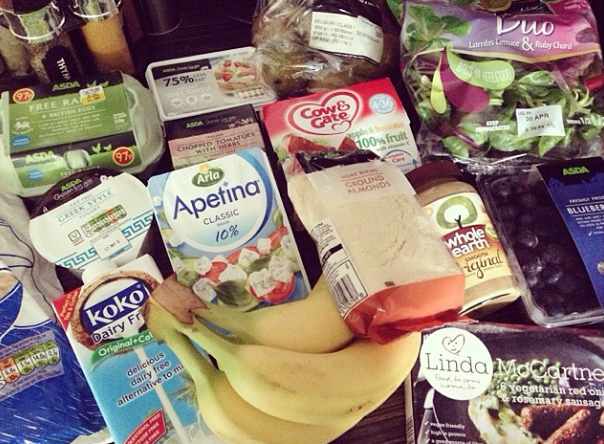
I really hope that you find this guide useful. Remember though that you don’t necessarily get ‘good and bad’ foods, just good and bad diets! Fill most of your trolly with fruits, vegetable and salad, some of it with lean meat or vegetarian source, fish and diary, whole grains and finally just a little bit of what you fancy and you won’t go wrong.
Finally, only buy what you want to eat; remember that your fridge and cupboard contents are the main influence on your diet!
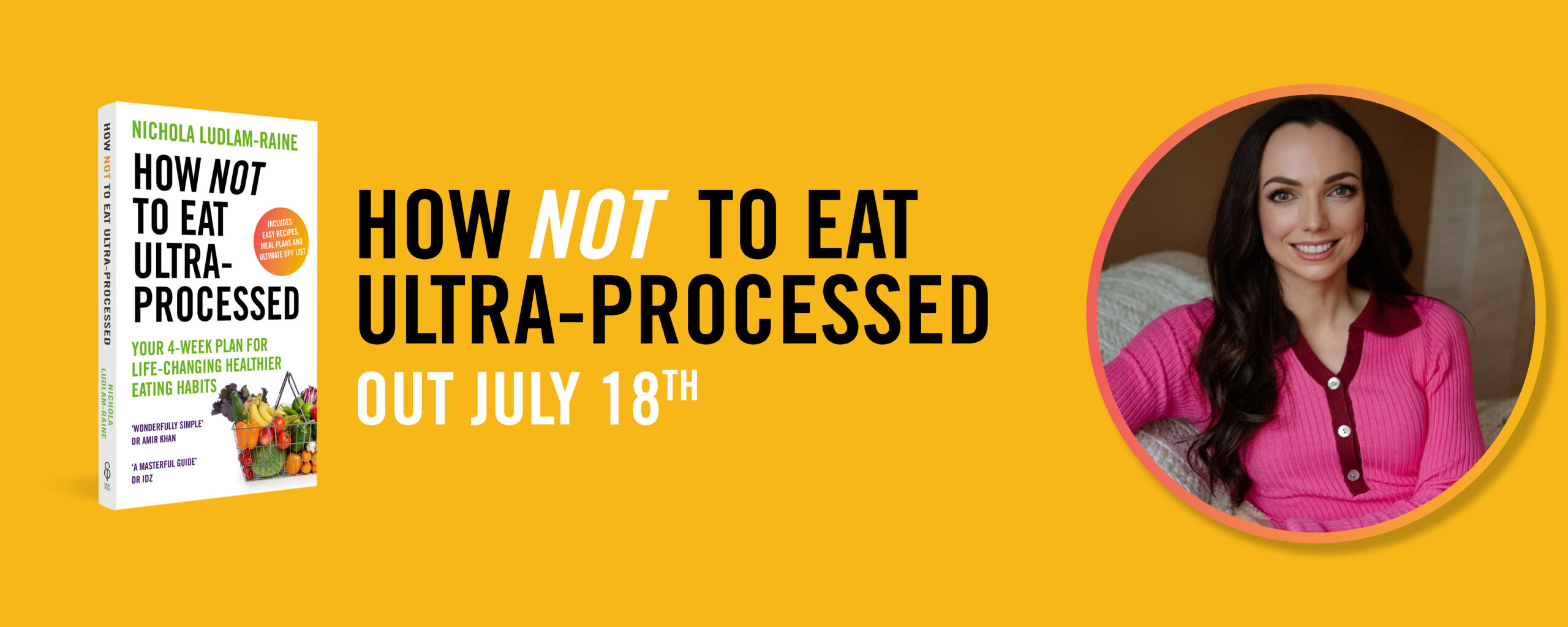
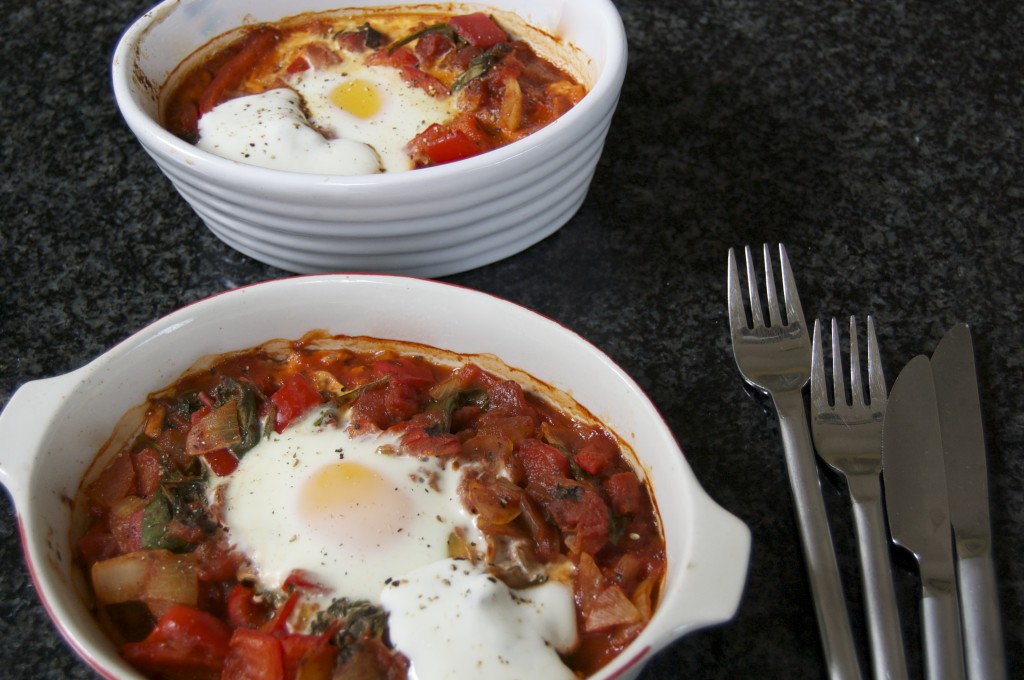
4 Comments